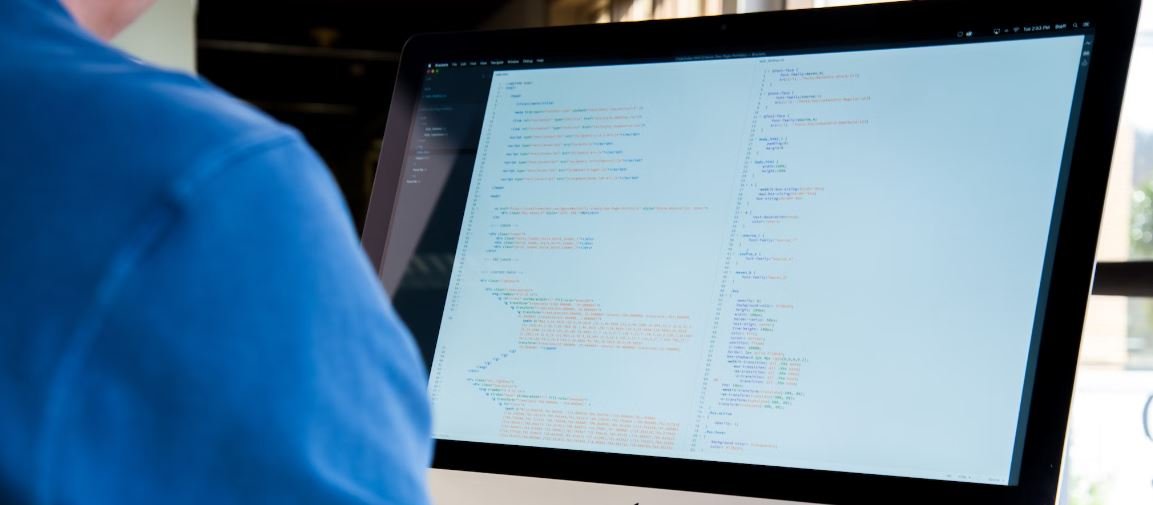Applications With Linear and Rational Equations
Linear and rational equations play crucial roles in various real-life applications, from finding unknown quantities in a system to determining optimal solutions. Understanding how to solve these types of equations and applying them correctly can greatly enhance problem-solving abilities. This article explores the practical applications of linear and rational equations and their significance in different fields.
Key Takeaways:
- Linear and rational equations have broad applications in multiple fields.
- By solving linear equations, unknown quantities can be determined.
- Rational equations arise in situations involving rates and proportions.
- Applying these equations effectively enhances problem-solving skills.
Applications in Everyday Life
Linear equations find applications in our daily lives, such as calculating expenses, determining salaries, and forecasting trends. They help in establishing relationships between variables and assist in making informed decisions. *Solving a linear equation can help determine the monthly budget required to save a specific amount of money for future goals.
On the other hand, rational equations are especially useful in situations involving rates and proportions. They can be applied to calculate average speeds, determine concentrations in mixtures, or analyze ratios. *Rational equations help find the optimal fuel consumption rate for a vehicle that minimizes costs.
Applications in Science and Engineering
In the field of science and engineering, linear equations find extensive use in modeling systems. They are used to describe the behavior of elements in circuits, predict population growth, and analyze properties of chemical reactions. *Linear equations enable scientists to predict the population growth of organisms based on initial conditions and the rate of change.
Rational equations are essential in fluid dynamics and structural analysis. They allow engineers and researchers to calculate flow rates, analyze displacement in structures, and design efficient systems. *Rational equations aid in designing optimal irrigation systems to ensure effective water distribution in agriculture.
Real-world Examples
Here are some real-world examples demonstrating the application of linear and rational equations:
| Field | Example |
|---|---|
| Finance | Calculating mortgage payments based on loan amount, interest rate, and term. |
| Healthcare | Determining optimal medication dosage based on weight and age. |
| Transportation | Calculating travel distances and times using speed equations. |
Benefits of Understanding Linear and Rational Equations
Having a solid understanding of linear and rational equations provides several benefits:
- Enhanced problem-solving abilities, enabling more effective decision-making.
- Improved analytical skills to interpret relationships between variables.
- Ability to optimize processes and systems by leveraging equations.
Conclusion
In conclusion, linear and rational equations have wide-ranging applications in various fields and everyday life. They enable us to solve problems, make informed decisions, and optimize systems. By understanding these equations and their applications, we can enhance our problem-solving skills and improve our ability to analyze real-world scenarios.

Common Misconceptions
Linear Equations
One common misconception about linear equations is that they always represent a straight line on a graph. While it is true that linear equations can represent a straight line, they can also represent a horizontal line (when the slope is zero) or a vertical line (when the slope is undefined).
- Linear equations can also have no solution or infinitely many solutions.
- The slope-intercept form (y = mx + b) is just one way to represent a linear equation, but there are other forms as well, such as the point-slope form and the standard form.
- Linear equations can be used in many real-life applications, such as calculating the cost of a phone plan based on minutes used or determining the distance traveled by a moving object over time.
Rational Equations
One common misconception about rational equations is that they can only have rational solutions. In reality, rational equations can have rational, irrational, or even imaginary solutions.
- Rational equations often involve fractions, and they can be simplified by finding a common denominator and cancelling out common factors.
- Sometimes, rational equations can result in extraneous solutions, which are solutions that do not satisfy the original equation. It’s important to check the solutions obtained and verify if they are valid.
- Rational equations are commonly used in financial calculations, such as calculating interest rates and loan payments.
Linear vs. Rational Equations
An important misconception is that linear equations and rational equations are the same thing. While both involve equations, there are distinct differences between the two.
- Linear equations consist of polynomials with degree one, whereas rational equations involve ratios of polynomials.
- Linear equations may have constants as coefficients, but rational equations always include variables in the denominator.
- Linear equations represent a straight line or a variation of it, while rational equations can have various shapes and forms, depending on the degree of the polynomials involved.
Applicability of Linear and Rational Equations
A common misconception is that linear and rational equations are only used in academic settings and have no real-world applications. However, both types of equations are widely used in various fields outside of the classroom.
- Linear equations are commonly used in physics to study motion, in economics to model supply and demand, in engineering to design circuits and systems, and in computer science for algorithms and simulations.
- Rational equations are applied in fields such as chemistry to calculate reaction rates, in biology to model population growth, in finance to analyze investments, and in medicine to study drug dosage and effectiveness.
- Understanding and being able to solve linear and rational equations is essential in practical problem-solving and decision-making across many disciplines.

Applications With Linear and Rational Equations
Linear and rational equations find practical applications in various fields, from physics and engineering to economics and biology. These equations form the foundation for solving real-world problems by using mathematical models. The following tables showcase different scenarios where these equations play a significant role.
Distance versus Time
One of the most common applications of linear equations is in analyzing distance versus time relationships. This table shows the distance traveled (in miles) over time (in hours) for a car traveling at a constant speed.
| Time (hours) | Distance Traveled (miles) |
|---|---|
| 1 | 60 |
| 2 | 120 |
| 3 | 180 |
| 4 | 240 |
Population Growth
Examining the growth of populations over time provides key insights into demographic trends. This table demonstrates the population (in thousands) of a city over a 10-year period.
| Year | Population (thousands) |
|---|---|
| 2010 | 120 |
| 2011 | 130 |
| 2012 | 145 |
| 2013 | 160 |
Supply and Demand
In economics, the principles of supply and demand influence market equilibrium. This table represents the relationship between the price of a product (in dollars) and the demand quantity (in thousands).
| Price ($) | Demand Quantity (thousands) |
|---|---|
| 5 | 100 |
| 10 | 80 |
| 15 | 60 |
| 20 | 40 |
Mixture Problems
Mixture problems involve finding the appropriate ratio when combining different substances. This table showcases the composition of a mixture (in kilograms) of two substances.
| Substance A (kg) | Substance B (kg) |
|---|---|
| 5 | 7 |
| 10 | 14 |
| 15 | 21 |
| 20 | 28 |
Investment Growth
Understanding the growth of investments helps in financial planning. This table presents the value (in dollars) of an investment after a certain number of years.
| Years | Investment Value ($) |
|---|---|
| 1 | 1000 |
| 2 | 1100 |
| 3 | 1210 |
| 4 | 1331 |
Speed of Sound in Different Media
The speed of sound varies depending on the medium it travels through. This table represents the speed of sound (in meters per second) in different substances.
| Substance | Speed (m/s) |
|---|---|
| Air | 343 |
| Water | 1482 |
| Steel | 5960 |
| Glass | 4540 |
Pollution Levels
Pollution levels are often measured to assess environmental quality. This table demonstrates the pollution index of a city measured over the past week.
| Date | Pollution Index |
|---|---|
| Monday | 80 |
| Tuesday | 75 |
| Wednesday | 81 |
| Thursday | 78 |
Water Flow Rate
In engineering, understanding water flow rates helps in designing efficient systems. This table showcases the flow rate (in gallons per minute) of water at various pipe diameters.
| Pipe Diameter (inches) | Flow Rate (gallons per minute) |
|---|---|
| 2 | 50 |
| 4 | 200 |
| 6 | 450 |
| 8 | 800 |
Food Consumption per Week
Studying food consumption trends helps in evaluating dietary patterns. This table represents the average weekly consumption (in pounds) of different food items.
| Food Item | Consumption per Week (pounds) |
|---|---|
| Meat | 5 |
| Fruits | 8 |
| Vegetables | 10 |
| Dairy | 15 |
Conclusion
Linear and rational equations find wide-ranging applications in different fields. By understanding and solving these equations, we gain insights into the relationships between variables in various scenarios, such as distance and time, population growth, supply and demand, and many others. These tables showcase the practicality of these equations and demonstrate the importance of mathematical modeling in solving real-world problems.
Applications With Linear and Rational Equations
Frequently Asked Questions
What are linear equations?
How are linear equations applied in real-world scenarios?
What are rational equations?
How can rational equations be used in practical situations?
What steps are involved in solving linear equations?
Are there any special rules or techniques for solving rational equations?
Can linear and rational equations be solved simultaneously?
Are there any real-life scenarios where both linear and rational equations are used together?
Can technology assist in solving linear and rational equations?
Where can I find additional resources to learn more about applications with linear and rational equations?





